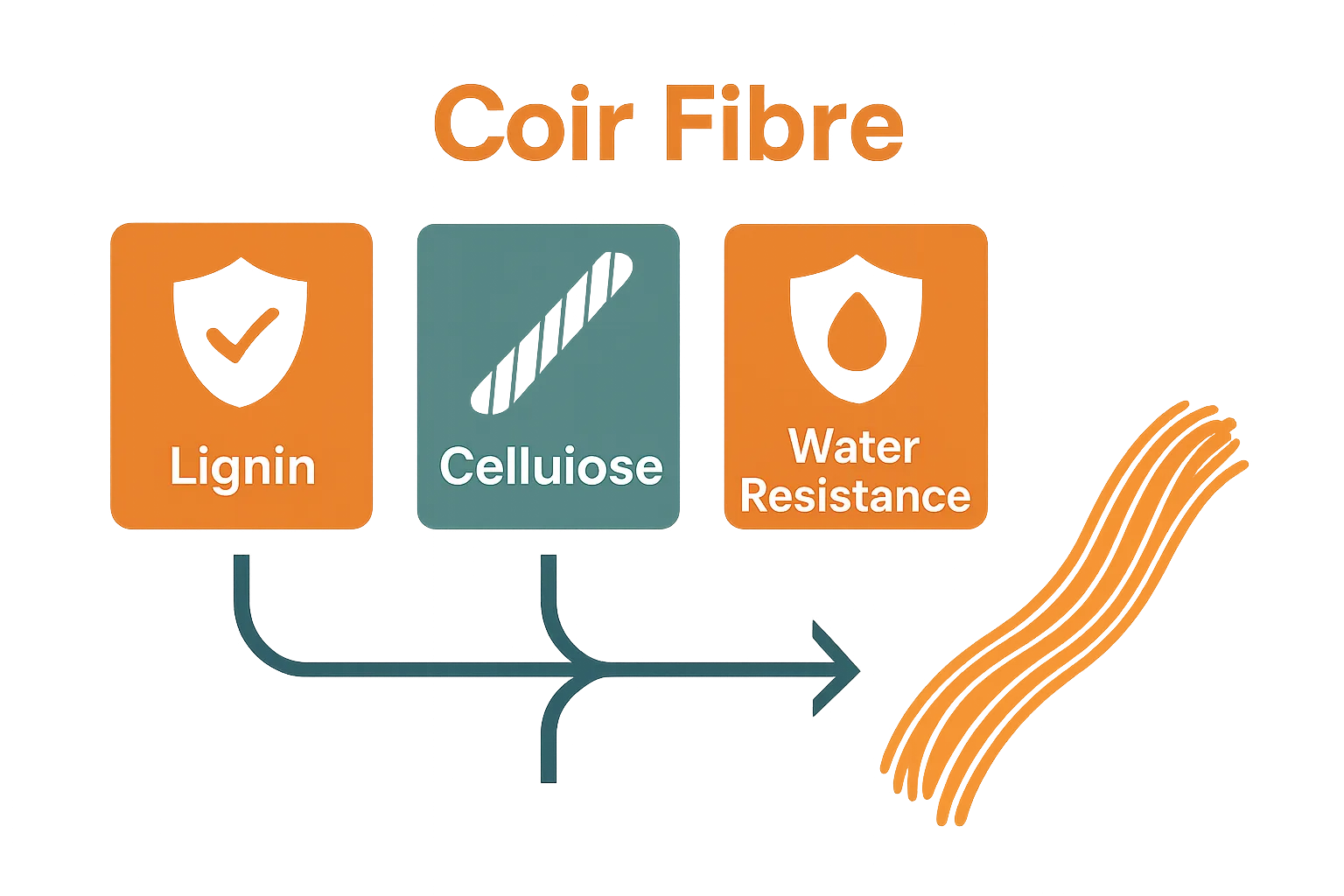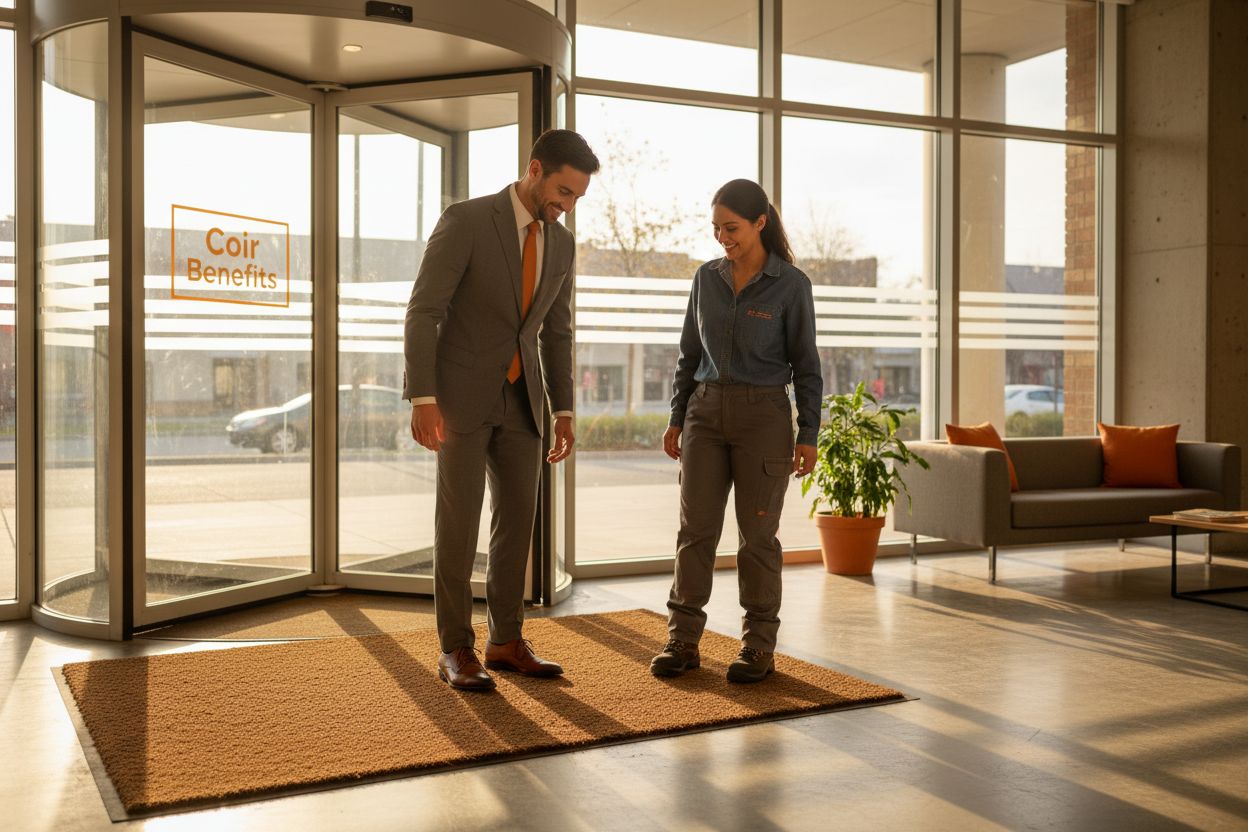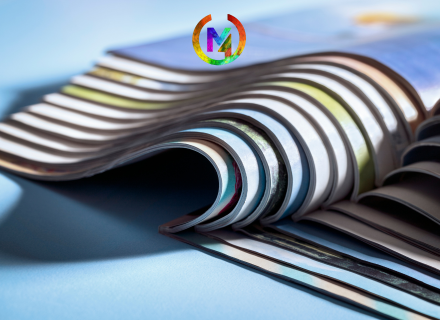Coir has quietly taken centre stage as an eco-friendly material found in everything from doormats to erosion control. Some might be surprised that coir fibres can absorb up to five times their own weight in water, making them incredibly practical. But what most never realise is that this natural wonder is crafted from what used to be thrown away as waste, turning discarded coconut husks into something genuinely valuable.
Table of Contents
- Understanding Coir: The Natural Fibre
- The Importance of Coir Mats in Various Industries
- How Coir Mats Are Manufactured: A Look at the Process
- The Benefits of Using Coir Mats: Eco-Friendly and Practical
- Real-World Applications of Coir Mats in Different Sectors
Quick Summary
| Takeaway | Explanation |
|---|---|
| Coir is a sustainable material | Coir is biodegradable and made from coconut husks, reducing waste and promoting environmental sustainability. |
| Ideal for high-traffic areas | Coir mats provide excellent dirt and moisture absorption, making them perfect for entrances and busy commercial spaces. |
| Supports rural economies | The production of coir mats helps agricultural communities in tropical regions by creating job opportunities and supporting local economies. |
| Resilient and durable | Coir mats withstand harsh conditions, maintaining performance and aesthetics even in challenging environments. |
| Versatile applications across industries | From landscaping to healthcare, coir mats are used in various sectors, highlighting their multifaceted benefits and functionality. |
Understanding Coir: The Natural Fibre
Coir represents a remarkable natural fibre extracted from the outer husk of coconuts, boasting extraordinary properties that make it an exceptional material for industrial and domestic applications. Coir is a versatile natural product that transforms agricultural waste into functional materials across numerous sectors.
Origin and Botanical Composition
The journey of coir begins with coconut palm trees, predominantly cultivated in tropical regions like India, Sri Lanka, and parts of Southeast Asia. When coconuts are harvested, their tough outer shell contains fibrous material that would traditionally be discarded. However, modern processing techniques have transformed this agricultural byproduct into a valuable resource.
Chemically, coir fibres are predominantly composed of two key structural components:
- Lignin: A complex organic polymer providing structural rigidity
- Cellulose: A primary structural component contributing to strength and durability
These natural polymers give coir its exceptional characteristics, including remarkable water resistance and impressive tensile strength.
Below is a feature table outlining the primary components of coir fibres and their roles in the performance characteristics of coir mats.
| Component | Description | Role in Coir Mats |
|---|---|---|
| Lignin | Complex organic polymer | Provides structural rigidity and water resistance |
| Cellulose | Natural polysaccharide (plant fibre) | Gives strength and durability |
| Coconut Husk | Outer layer of coconut fruit | Source material for coir extraction |
| Natural Polymers | Combination of lignin and cellulose | Contributes to overall durability |
| Water Content | Absorbed and retained within fibre structure | Enables high moisture absorption |

Industrial and Practical Applications
Coir’s unique properties have made it an indispensable material across multiple industries. Its natural resistance to moisture, durability, and biodegradable nature position it as an environmentally friendly alternative to synthetic materials. Our comprehensive guide on coir matting explores the diverse applications of this extraordinary natural fibre.
From entrance matting and landscaping to erosion control and agricultural products, coir demonstrates remarkable versatility. Its ability to withstand challenging environmental conditions while maintaining structural integrity makes it a preferred choice for businesses seeking sustainable and robust solutions.
The Importance of Coir Mats in Various Industries
Coir mats have emerged as a transformative solution across multiple sectors, offering sustainable and practical benefits that extend far beyond traditional flooring applications. Commercial matting solutions are increasingly recognising coir’s exceptional versatility and environmental credentials.
Commercial and Industrial Applications
In the commercial landscape, coir mats serve multiple critical functions. Entrance areas, reception zones, and high traffic corridors benefit immensely from their robust design. Businesses across retail, hospitality, education, and healthcare sectors utilise coir mats for:
- Effective dirt and moisture containment
- Enhanced safety through slip resistance
- Professional aesthetic presentation
- Sustainable brand messaging
The manufacturing resilience of coir mats makes them particularly suitable for environments requiring consistent performance under challenging conditions.
Environmental and Sustainable Solutions
Beyond immediate functional benefits, coir mats represent a significant stride towards sustainable business practices. Coir Logo Mats for UK businesses demonstrate how organisations can integrate environmentally conscious materials into their operational infrastructure.
Unlike synthetic alternatives, coir mats are biodegradable, renewable, and produced through processes that minimise environmental impact. Their production supports agricultural communities in tropical regions, creating economic opportunities while reducing waste.
Industrial sectors ranging from construction and warehousing to educational institutions are increasingly adopting coir mats as part of their commitment to sustainable infrastructure. The material’s natural durability ensures long term performance without compromising environmental responsibilities.
How Coir Mats are Manufactured: A Look at the Process
The manufacturing of coir mats represents a fascinating intersection of traditional craft and modern industrial techniques, transforming raw coconut husks into functional and sustainable floor coverings. Coir fibre processing involves several intricate stages that require precision and expertise.
Initial Fibre Extraction
The journey begins with coconut husks, which undergo a meticulous preparation process known as retting. During this stage, the husks are soaked in water to facilitate natural decomposition, allowing the tough fibrous material to separate from the woody core. Skilled workers carefully extract these fibres, which are then cleaned, sorted, and prepared for further processing.
Key steps in fibre extraction include:
- Separating outer husks from coconut shells
- Soaking fibres in water to enhance malleability
- Mechanical defibration to remove impurities
- Drying and grading of extracted fibres
Weaving and Mat Formation
Once processed, the coir fibres are transformed into mats through sophisticated weaving techniques. Manufacturers can create various textures and densities by adjusting weaving patterns and fibre thickness. Our comprehensive coir matting guide provides deeper insights into these intricate manufacturing processes.
The weaving process typically involves spinning fibres into yarn, which is then interlaced on specialised looms. Advanced machinery enables precise control over mat characteristics such as pile height, thickness, and overall durability. Some manufacturers incorporate additional treatments to enhance water resistance and improve wear performance.
These manufacturing techniques ensure that coir mats not only meet functional requirements but also maintain their commitment to sustainability throughout the production cycle.
The following table summarises the key steps in the manufacturing process of coir mats, illustrating the transformation from raw coconut husks to finished matting products.
| Manufacturing Stage | Description |
|---|---|
| Fibre Extraction | Removal of fibres from coconut husks after retting |
| Cleaning and Sorting | Fibres are washed and separated based on quality |
| Drying and Grading | Fibres are dried and categorised according to grade |
| Spinning | Fibres are spun into yarns |
| Weaving | Yarns woven on looms to produce mats |
| Final Treatments | Additional processes to enhance water resistance or durability |
| Quality Control | Inspection to ensure finished mats meet performance standards |
The Benefits of Using Coir Mats: Eco-Friendly and Practical
Coir mats represent a sophisticated solution that seamlessly blends environmental responsibility with exceptional functional performance. Sustainable flooring materials are increasingly crucial in modern commercial and residential environments, and coir mats stand at the forefront of this innovative approach.
Environmental Sustainability
The ecological credentials of coir mats extend far beyond mere marketing rhetoric. These remarkable floor coverings are completely biodegradable and produced through a process that actively supports agricultural communities in tropical regions. By utilising coconut husks that would otherwise be discarded, manufacturers create a closed-loop production system that minimises waste and maximises resource efficiency.
Key environmental advantages include:
- Carbon-neutral production process
- Renewable raw material sourcing
- Minimal industrial processing requirements
- Supports rural agricultural economies
- Zero synthetic chemical dependencies
Practical Performance Characteristics
Beyond their environmental benefits, coir mats deliver exceptional practical performance across diverse settings. Their natural composition provides inherent qualities that synthetic alternatives struggle to match. Our comprehensive guide to coir matting solutions explores these unique attributes in greater depth.
The robust fibrous structure of coir ensures superior dirt trapping, moisture absorption, and slip resistance. These characteristics make them particularly valuable in high-traffic commercial environments such as office entrances, retail spaces, and hospitality settings. Their natural durability means they maintain aesthetic and functional performance even under challenging conditions, representing a smart long-term investment for businesses committed to sustainable infrastructure.

Real-World Applications of Coir Mats in Different Sectors
Coir mats have transcended their traditional role, emerging as a versatile solution across diverse industries. Infrastructure and sustainable materials are increasingly recognising the multifaceted potential of this natural fibre.
Commercial and Institutional Environments
Entrance zones in commercial settings represent a primary application for coir mats. Educational institutions, corporate offices, healthcare facilities, and retail establishments leverage these mats to manage dirt, moisture, and maintain professional aesthetic standards. The robust nature of coir ensures consistent performance in high-traffic areas, effectively reducing floor maintenance costs and enhancing safety.
Key commercial applications include:
- Reception and lobby areas
- Educational institution entrances
- Corporate office floor management
- Hospital and healthcare facility corridors
- Retail store front-of-house zones
Industrial and Specialised Sectors
Beyond traditional settings, coir mats demonstrate remarkable adaptability in specialised industrial environments. Construction sites, warehouses, and manufacturing facilities utilise these mats for critical functional purposes. Our comprehensive coir matting guide provides deeper insights into these innovative applications.
Industrial sectors have discovered unique applications for coir mats, including:
- Temporary road and embankment stabilisation
- Erosion control in landscaping projects
- Workshop and factory floor protection
- Temporary ground cover in agricultural settings
- Equipment and machinery area demarcation
The natural durability and eco-friendly composition of coir mats position them as a superior alternative to synthetic solutions across multiple professional domains.
Bring Sustainable, High-Performance Coir Mats to Your Business
Are you facing challenges keeping entrances clean, safe and professional while trying to reduce your environmental impact? The article has shown how coir mats expertly blend natural durability with eco-friendly composition, making them the perfect answer for businesses prioritising both performance and sustainability. If you need reliable dirt-trapping mats that impress clients and support your sustainability goals, you can find tailored solutions at Mats4U.

Select from our wide range of made-to-measure coir matting options or browse industry-specific floor coverings to match your brand, budget and performance needs. Visit Mats4U now to upgrade your entrances and take advantage of robust, sustainable mats designed for commercial, industrial and institutional environments. Act now to create safer, smarter and more sustainable spaces for everyone who walks through your door.
Frequently Asked Questions
What is coir made from?
Coir is made from the outer husk of coconuts, specifically the fibrous material that is found between the hard shell and the outer layer of the coconut.
What are the main components of coir fibres?
Coir fibres are primarily composed of lignin and cellulose, which provide structural rigidity and strength, making coir durable and resistant to moisture.
How are coir mats manufactured?
Coir mats are manufactured through a process that includes fibre extraction, cleaning, sorting, and weaving. The raw fibres are woven into mats using sophisticated techniques to create various textures and densities.
What are the environmental benefits of using coir mats?
Coir mats are biodegradable, renewable, and produced from agricultural waste, contributing to sustainable practices. Their production process is carbon-neutral and supports agricultural communities, promoting economic opportunities while reducing waste.









